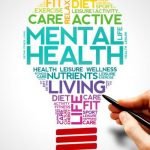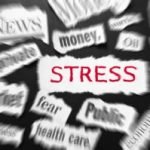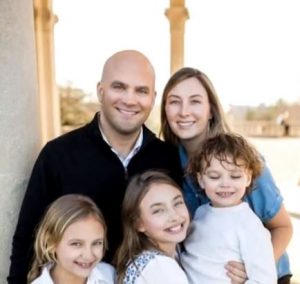Category: Panic Disorder
What is Panic Disorder?
Panic Disorder is an anxiety disorder that occurs when someone experiences recurrent, spontaneous, unexpected, and untriggered panic attacks. This leads to preoccupation with and fear of experiencing another attack. Panic attacks occur when there is an intense physical surge of symptoms that quickly reach their peak, usually in a few minutes. A panic attack can be felt very differently from one person to another. A combination of the following symptoms is typically experienced during a panic attack:
- Heart palpitations, pounding heart, or accelerated heart rate
- Sweating/perspiration
- Trembling or shaking
- Sensations of shortness of breath or feeling smothered
- Feelings of choking
- Chest pain or discomfort
- Nausea or abdominal distress
- Feeling dizziness, unsteadiness, light-headedness, or faintness
- Chills or feeling over-heated
- Numbness or tingling sensations
- Feelings of depersonalization (unreality)
- Feelings of derealization (being detached from oneself)
- Fear of losing control or “going crazy”
- Fear of death or dying
- Sense of impending doom or danger
At least one of these panic attacks is followed by one month or more of persistent concern or worry about having another attack and/or a significant change in behavioral pattern (typically avoidance of certain places or situations).
Panic attacks can be viewed as a “false alarm” related to a fight-or-flight response to a mis-perceived threat. Fight-or-flight is a natural human reaction that prepares us to defend ourselves or flee the situation. When someone becomes hyperaware of their body’s sensations, they may interpret a sensation as a threat when there’s not one.
Panic disorder affects 2-3% of Americans and is affects women roughly twice as frequently as it affects men. The onset of Panic Disorder typically occurs in adulthood, but can also affect children and teens.
What is Agoraphobia?
Agoraphobia occurs when someone persistently avoids situations in which they might become embarrassed or have difficulty escaping. This is often the result of fear of having a panic attack in public. This can manifest in fear of using public transportation (such as planes, buses, trains), being in open spaces (such as parking lots, malls, or stadiums), being in enclosed spaces (such as elevators, stores, or cars), being in crowds or standing in line, or even being outside the home alone.
Panic Disorder can be present with or without Agoraphobia, but these disorders commonly present together. When they occur together, Agoraphobia usually develops following an adverse experience, such as having a panic attack in one of these places/situations in which the person feels trapped, embarrassed, or fearful. Over time, avoidance of these situations and places reinforces one’s fear, leading to further avoidance.
How are Panic Disorder and Agoraphobia treated?
People with Panic Disorder often present to emergency departments or their physician’s office due to their uncomfortable physical sensations (often fearing that they are suffering from a heart attack). While it is important to rule out any physical cause for these symptoms, repeated trips to the ER and doctor visits can also reinforce the symptoms. Instead, it is important to receive appropriate mental health treatment for Panic Disorder and Agoraphobia.
Treatment for Panic Disorder and Agoraphobia typically includes of a combination of medication and psychotherapy. Medications commonly used to treat Panic Disorder and Agoraphobia include selective serotonin reuptake inhibitors (SSRIs) and serotonin-norepinephrine reuptake inhibitors (SNRIs), beta blockers, and benzodiazepines. SSRIs and SNRIs are a category of antidepressants that are also useful in treating anxiety disorders such as Panic Disorder and Agoraphobia. Beta blockers can be used to help control some of the physical symptoms of panic attacks such as a rapid heart rate. Benzodiazepines are useful to provide temporary relief of acute anxiety symptoms. These medications can be very helpful, but they should be used with caution due to their potential for dependence. Benzodiazepines can also interfere with the ability to habituate or learn that situations are safe. Only your health care provider should determine whether these medications are appropriate for use and you should not discontinue any medications without consulting with your provider.
Cognitive-Behavioral Therapy (CBT) is an evidence-based type of psychotherapy that is helpful in treating Panic Disorder and Agoraphobia. This therapy helps people to change their behavior and their way of thinking. Various CBT techniques are useful in treatment of these anxiety disorders. Interoceptive exposures involve purposely provoking uncomfortable physical sensations (heart pounding, shortness of breath, dizziness) to desensitize oneself to them. This should be done with the guidance of a trained mental health professional to ensure that it is done correctly. Similarly, gradually limiting avoidance of circumstances and places (such as driving or going into stores) that are typically avoided allows someone to become comfortable and gain confidence in these situations. Breathing and relaxation exercises can help to lower someone’s overall level of anxiety to prevent them from having a panic attack. And finally challenging faulty beliefs, such shifting from thinking “I’m in danger” to “my body is telling me that I’m in danger, but I’m actually safe” can be helpful in lowering related anxiety. Other helpful interventions include biofeedback and mindfulness. Additional lifestyle changes such as reducing one’s intake of caffeine, sugar, nicotine, regular exercise and sleep, and limiting checking vital signs can be helpful in lowering anxiety.
If you believe that you or someone you know is suffering from Panic Disorder and/or Agoraphobia, it is important to seek the help of a mental health provider. These disorders can become debilitating without proper treatment but can become manageable if properly treated.
 by Jennifer B. Wilcox, PsyD
by Jennifer B. Wilcox, PsyD
Staff Psychologist, Lindner Center of HOPE
















